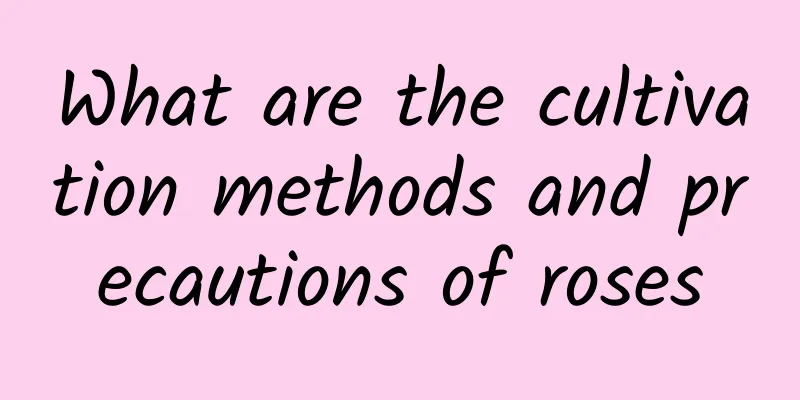What are the cultivation methods and precautions of roses

Rose cultivation methodRose has strong adaptability to the environment and is not picky about soil, but is suitable for planting in loose, fertile, organic-rich, slightly acidic, well-drained loam. It prefers a warm, sunny, well-ventilated environment. The optimum temperature for most varieties is between 15-26 degrees during the day and between 10-15 degrees at night. The temperature in winter must not be lower than 5 degrees. Soil: If you plant roses in the ground, you need to choose a sunny, well-ventilated, slightly acidic plot. When deep plowing the land, you can apply organic fertilizer as base fertilizer. Potted roses can be planted in slightly acidic sandy soil rich in humus. Alkaline soil cannot be used. Light: Rose likes light and needs sufficient light during the growth period. The daily light time needs to be more than 6 hours, otherwise the leaves will grow too long and it will be difficult to bloom. Even if buds are formed, the flowers will not be bright or fragrant after blooming. Watering methodWhen watering roses, water them when the soil is dry and when the soil is wet. Do not allow water to accumulate. Water them every two days when leaves grow in March. When buds form in April, water them once a day. Water them moderately during the flowering period in May. Follow the principle of not watering unless the soil is dry, and watering thoroughly when you do. Spray water in time in summer to retain moisture. Fertilization methodWhen fertilizing roses, you should follow the principle of applying thin fertilizers frequently. Do not use raw or concentrated fertilizers. In winter, you can apply a small amount of organic fertilizer to the roots to facilitate better wintering. In March, apply liquid fertilizers such as decomposed human feces and urine, bean cakes, chicken and duck manure, and fish offal. After the flowers fade in summer, you can apply a medium concentration of decomposed liquid fertilizer once to promote abundant flowering in autumn. Pruning methodsWhen the rose begins to form the first batch of buds, you can keep one with a good shape and cut off the rest. After the flowers fade, you need to trim the remaining flowers and remove the dead and old leaves to reduce nutrient consumption. Precautions for rose cultivationRoses are relatively cold-resistant and can withstand temperatures as low as minus 10 degrees Celsius. They can overwinter outdoors in the south. Do not prune them after they bloom in October. Apply more phosphorus and potassium fertilizers to make the branches strong and full to enhance their cold resistance. Water and fertilize in time during the growing period, but not excessively, otherwise it will cause serious damage to the roots. |
<<: What fertilizer is good for cucumbers
>>: Should I use a large or small pot for the lantern flower?
Recommend
How to grow elmleaf plum in spring
1. Watering The water demand of Prunus armeniaca ...
How to prune ornamental pomegranate trees? Pruning time and method
Pomegranate tree pruning time Ornamental pomegran...
Should I use a large or small pot for gardenia?
Should I use a large or small pot for gardenia? G...
What to do if hyacinth is pinched by an arrow
1. Reasons 1. Low temperature Hyacinthus generall...
Can money grass be propagated by cuttings? What is the method of cuttings?
1. Can it be propagated by cuttings? Moneywort ca...
How to maintain the ice velvet succulent
When caring for the Ice Velvet Succulent, you sho...
Why do the leaves of green radish turn yellow?
1. Too much light Reason: Pothos should not be ex...
When is the best time to plant carrots?
Carrots are the main vegetable in autumn and are ...
Time and method of changing soil for Dripping Guanyin
Time to change the soil of Dripping Guanyin It is...
Breeding methods and precautions of Mantiaohong
1. Maintenance methods 1. Soil: It is suitable fo...
7 Phalaenopsis cutting methods
Phalaenopsis is famous for its graceful flowers a...
Why can't you grow green radish at home?
1. Why not You can actually keep green ivy at hom...
Ten trees you shouldn’t plant at home
1. Mulberry The word “桑” in “mulberry tree” has t...
How to grow hydrangea in autumn
1. Suitable temperature For hydrangeas, the tempe...
Why do indoor plants shed leaves after watering?
1. Different types Although most plants like wate...









